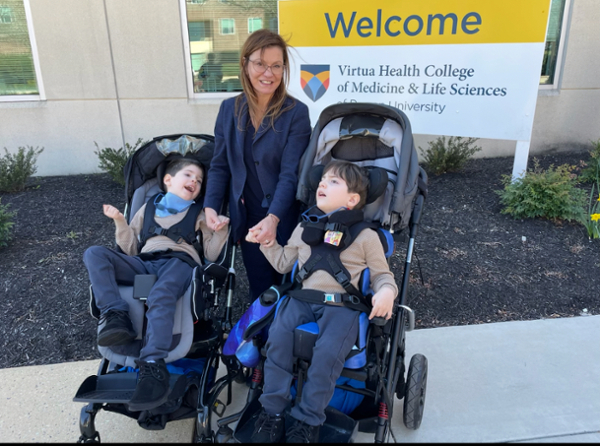Virtua Health College researchers achieve breakthrough with first gene therapy targeting white matter in fatal childhood brain disorder
Virtua Health College researchers achieve breakthrough with first gene therapy targeting white matter in fatal childhood brain disorder

For more than 2 decades, Rowan-Virtua School of Osteopathic Medicine researcher Paola Leone, Ph.D., has dedicated her career to investigating Canavan disease, a debilitating brain disorder that affects infants and young children. This previously untreatable disease causes developmental delays, loss of motor skills, and, over time, progressive brain degeneration, with most affected children not surviving past age 10. Now, Leone’s determination and the support of families facing this challenge have led to a breakthrough that could change everything.
In a study published in Nature Medicine, Leone and her team reported the first targeted gene therapy to restore myelin, the brain’s protective coating, in children with Canavan disease. Early results show improved brain development, reduced toxic buildup, and, in some cases, children achieving milestones once thought impossible.
“I’ve worked with these families for decades,” says Leone, a professor of neuroscience and director of Rowan University’s Cell and Gene Therapy Center. “The results we’re seeing are impressive. We’ve seen brain structures grow, brain function improve; we’re seeing patients walk with minimal assistance. Their quality of life has completely changed.”
The journey to this moment has been anything but easy. In the 1990s and 2000s, Leone led early gene therapy trials that reduced some biochemical markers associated with the disease. Still, these trials fell short of improving patient outcomes or preventing the breakdown of myelin, a protective coating in the brain that allows nerve signals to travel between brain cells, an issue that occurs in Canavan disease.
“We needed a therapy that targeted the right cells in the brain, the oligodendrocytes, which are missing the functional enzyme due to the gene mutation and are responsible for producing myelin,” Leone explains. The researcher also needed funding to support the clinical trial.
The turning point came when Leone met a family from Brooklyn in 2017 with two young children who had been newly diagnosed with Canavan.
“The mother was a rock, holding her newborn and telling me, ‘What do you need to make this happen?’” Leone recalls.
Within weeks, the family’s grassroots campaign raised $1.5 million to launch Leone’s next round of research. The family promptly established the Cure Canavan Fund 501(c)(3), the only foundation that directly supports specialized physical therapy sessions and provides essential equipment worldwide for children affected by the disease, while also advancing ongoing research. The foundation is also producing a documentary to raise awareness about Canavan disease and to shed light on the challenges and progress in developing treatments for rare disorders.
“Their courage and resilience profoundly inspired me,” Leone says, “Nothing stopped us; not failed grants, not setbacks, not the COVID-19 pandemic and not the enormity of the task.” We were unstoppable, because the drive to treat these children prevailed over everything. The therapy Leone’s team helped discover in her laboratory at Rowan-Virtua SOM, MYR-101, was developed in collaboration with industry partners and has demonstrated safety and compelling efficacy in its first-in-human trial. Leone believes the FDA will recognize the profound benefits these children are experiencing, and that regulatory approval could come as early as next year. The implications reach far beyond Canavan disease, as Leone’s team is already applying similar strategies to other neurological disorders. including multiple sclerosis, multiple system atrophy, frontotemporal dementia and motor neuron disorders
“This is not the end but the beginning of a new era in the treatment of neurological disorders, conditions that, at their core, involve impaired white matter,” she says, noting that her ongoing research is motivated by the families affected by currently untreatable brain disorders her research aims to support. “Their strength fuels my work. Every step is about giving these children and their parents a future.”